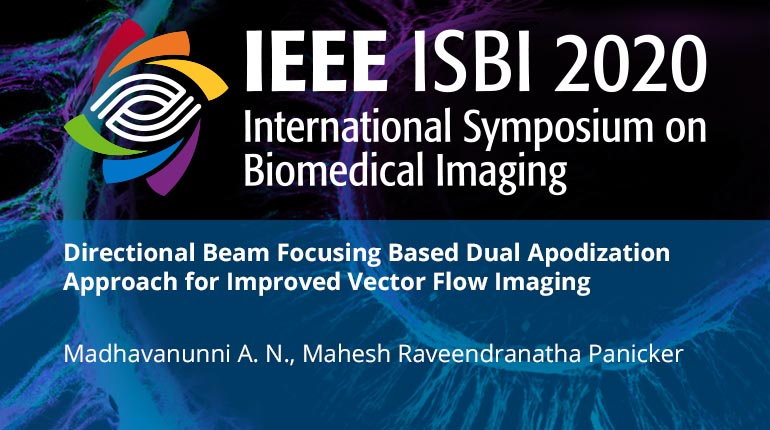
Already purchased this program?
Login to View
This video program is a part of the Premium package:
Directional Beam Focusing Based Dual Apodization Approach for Improved Vector Flow Imaging
- IEEE MemberUS $11.00
- Society MemberUS $0.00
- IEEE Student MemberUS $11.00
- Non-IEEE MemberUS $15.00
Directional Beam Focusing Based Dual Apodization Approach for Improved Vector Flow Imaging
The design of apodization and windowing functions forms the predominant part of the beamforming process in ultrasound imaging. However, the detailed analysis of apodization in the case of beamforming for flow imaging is very limited in the literature. This paper introduces the concept of dual apodization technique in vector triangulation for ultrasound-based vector flow imaging. The approach utilizes the idea of multiple apodization to induce a steering effect at receive along with sidelobe suppression for the delay compensated radio-frequency (RF) signals. The method is investigated using extensive simulations for transverse flows with different flow profiles at different velocities. The simulation study using 192 element 3 MHz linear array shows an improvement in resolution and better clutter suppression. The proposed approach is further analyzed using various conventional and data adaptive apodization techniques for a gradient flow profile. The error variance in velocity magnitude estimate is as low as 5.0251?10-4 and the mean angle error is +0.7358? using Hanning-Gaussian apodization for a transverse gradient flow with a peak velocity of 0.25m/s.
The design of apodization and windowing functions forms the predominant part of the beamforming process in ultrasound imaging. However, the detailed analysis of apodization in the case of beamforming for flow imaging is very limited in the literature. This paper introduces the concept of dual apodization technique in vector triangulation for ultrasound-based vector flow imaging. The approach utilizes the idea of multiple apodization to induce a steering effect at receive along with sidelobe suppression for the delay compensated radio-frequency (RF) signals. The method is investigated using extensive simulations for transverse flows with different flow profiles at different velocities. The simulation study using 192 element 3 MHz linear array shows an improvement in resolution and better clutter suppression. The proposed approach is further analyzed using various conventional and data adaptive apodization techniques for a gradient flow profile. The error variance in velocity magnitude estimate is as low as 5.0251?10-4 and the mean angle error is +0.7358? using Hanning-Gaussian apodization for a transverse gradient flow with a peak velocity of 0.25m/s.
 Cart
Cart Create Account
Create Account Sign In
Sign In





